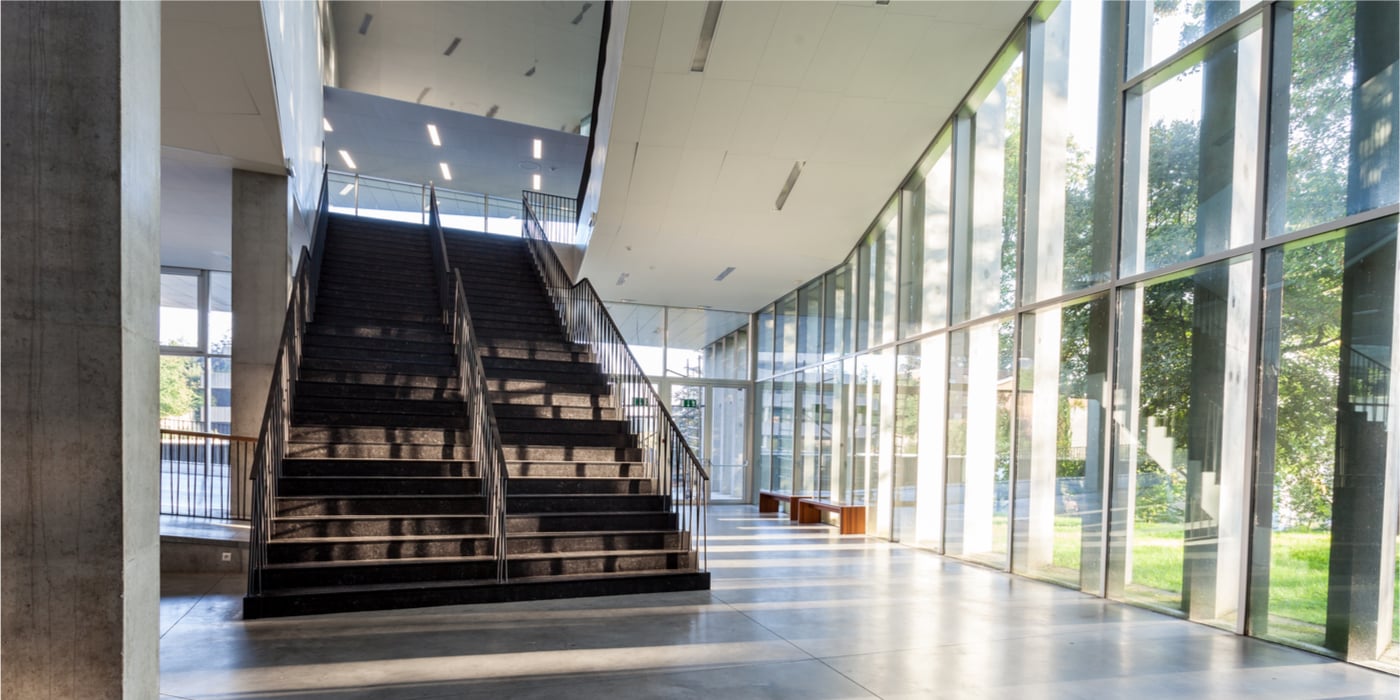
By: Caitlin Dimalanta | December 9, 2021
Part seven of an ongoing series guiding you on the path to creating a cleaner, healthier, greener and safer building for re-entry and beyond.
While working towards your sustainability goals, you are bound to encounter the topic of wellness. The challenges we faced these past couple of years have shaped us to prioritize our physical health wellbeing more than ever. The return on investment on facility wellness programs have the potential of increasing employee productivity & retention, decreasing healthcare & disability costs for your business along with reducing student absenteeism.
Interested in learning more about developing a successful & sustainable facility maintenance plan? Be sure to check out the other segments of this blog series:
Part 1: How to Develop a Sustainable Building Program
Part 2: Green Cleaning Tools, Equipment & Technology for Healthier Indoor Environments
Part 3: Planning an Efficient Waste Diversion & Recycling Program
Part 4: Put a Greener & Cleaner Foot Forward: Entryway Matting
Part 5: Reducing Consumption with Smart Purchasing Decisions
Part 6: Cutting Down Facility Maintenance Costs with Energy Efficiency
Physical Wellness Essentials
Whether you are managing an office, a commercial building, a restaurant or a school, facility management plays a pivotal role in contributing to and carrying out programs that focus on occupant wellness. 

Indoor Air Quality
According to the EPA, on average Americans spend about 90 percent of their time indoors where air pollutants are 2 to 5 times more concentrated. The main sources the cause indoor air pollution include: tobacco, coal heating, cooking appliances, insecticides, paints and cleaning supplies that release harmful chemicals.
Maintaining indoor air quality (IAQ) and minimizing pollutant sources is crucial to the health of building occupants. It was found in research compiled by the World Green Building Council that poor air quality negatively affected participants' performance rates by up to 10 percent. The WGBC also reported that offices equipped with an outdoor air supply ventilation source experienced reduced absenteeism rates as much as 35 percent.
Tips to manage and increase IAQ within your facility:
- Choose low-emitting products that have been third-party certified and labeled by reputable organizations such as GREEENGUARD, ECOLOGO, Green Seal and the South Coast Air Quality Management District Clean Air Choices – Cleaner Certification. Be wary of manufacturer claims of “no VOC,” “natural” or “alternative.”
- Open doors and windows when temperature and humidity levels permit. However, be mindful of outdoor allergens during spring and fall seasons.
- Consider the placement of an air purifier in enclosed spaces such as the AeraMax Professional air purifiers. The AeraMax Professional air purifiers incorporate a four-stage air filtration integrated with HEPA filters that remove up to 99.97 percent of airborne contaminants and have 3-5 air changes per hour.
Lighting
Another component of facility management that promotes overall occupant wellness is lighting. Proper lighting that allows building occupants to comfortably and accurately perceive their surroundings which leads to reduced stress, increased focus and ultimately higher levels of productivity. Not to mention it contributes to regulation of the body’s circadian clock.
LED Lighting systems are a great solution to facility lighting challenges with your budget taken into account. Good quality LED bulbs have a useful life of 25,000+ hours and cut energy use by more than 80 percent. If facility managers all across the country were to shift to LED lights over the next two decades could save the U.S. $250 billion in energy costs decrease electricity consumption for lighting by roughly 50 percent and avoid 1,800 million metric tons of carbon emissions.

Hand Hygiene
Lastly, one of the most effective methods to promote wellness and combat the spread of germs is with proper hand hygiene. It is an easy and cost effective way to improve the health of building occupants because washing hands for 20 seconds (including around wrists, under finger nails and between fingers) after key moments prevents illnesses and infections from spreading. Here are a few suggestions to support healthy hand hygiene throughout your facility:
- Frequently clean and disinfect high-touch surfaces such as doorknobs, countertops and restroom surfaces
- Ensure occupants have access to sinks in areas beyond the restroom
- Utilize signage as reminders for building occupants to wash their hands
- Strategically place hand sanitizer dispensers throughout your building in high trafficked areas like restrooms, lobby/reception areas, workstations, break rooms, conference rooms and fitness centers
WAXIE is committed to helping our customers keep their facilities cleaner, healthier, greener and safer. That means creating customized cleaning solutions to meet your specific needs, and then providing the ongoing training and support to help you achieve a cleaner and healthier building environment with building occupant wellness.
Please contact your WAXIE Account Consultant today to schedule a consultation.
Caitlin Dimalanta is WAXIE’s eCommerce Specialist. She enjoys researching and implementing various SEO (search engine optimization) strategies to enhance WAXIE’s eCommerce platform Web@Work. Caitlin has a Bachelor's Degree in Marketing from San Diego State University.




